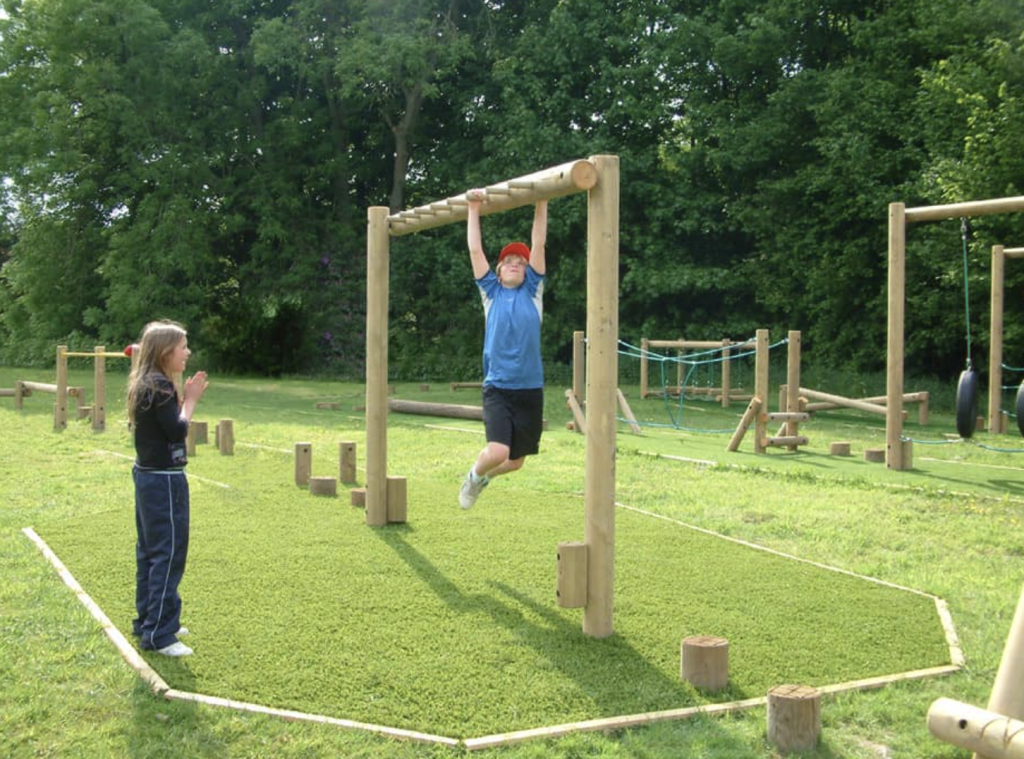Nowadays, there’s much discussion about the best way to raise children. Yet, most experts would agree on the value of cooperative play.
Recent research indicates that playing with others helps kids develop important life skills such as communication and problem-solving. It’s also a lot of fun! Please continue reading to discover more about the advantages of cooperative play on monkey bars and how to utilise it to help your children learn while having fun!
Monkey Bars and Cooperative Play
Monkey bars are an excellent method for kids to get some exercise. But how can this be used for cooperative play?
When children play cooperatively, they work together to attain a shared objective. This might be playing games, discussing their day, or completing a project.
Children like playing, and monkey bars are a fantastic way to interact with others. Moreover, children monkey bars are an excellent approach to developing cooperative play since they push children to collaborate and compete to accomplish tasks and acquire new tricks and talents.
Yet, cooperative play only happens after some time. Your child should go through five prior phases of play before reaching this stage.
Unoccupied Play
The first stage, unoccupied play, is when a child starts to experience the environment using their senses. They move their bodies and engage with items merely because it is intriguing or feels nice to them.
At this age, your child prefers objects with unusual patterns, textures, and things they can see or touch.
Solitary Play
Children go from unoccupied play to solitary or independent play. At this period, a kid will play alone with little to no care for what other kids or adults are doing around them.
Your kid may stack and knock on blocks, arrange or move about items, look through a book, or prefer throwing a noise maker or other such toy at this time.
Onlooker Play
At this stage, kids would watch other children play while not playing themselves. Driven by curiosity, little ones may sit and watch others for extended periods without attempting to join in on the fun. Your kid is now observing how play “works” and developing the skills necessary to participate when ready.
Parallel Play
A child will be ready to progress onto parallel play after they have mastered bystander play. Parallel play involves children playing beside and near other children without actively playing with them. Youngsters often love the rush of being near other kids, but they still need to learn how to join other kids’ activities or invite other kids to enter theirs.
You may feel uneasy if your kid seems to neglect the other children during a playdate, but this is typically due to their being in an earlier stage of play, such as this one.
Associative Play
Associative play is the last stage of play before cooperative play. Associative play involves children playing together without a purpose. Children may be playing, laughing, and talking together, yet they may have completely different expectations for the result of the game they are each playing.
Your child and their friends may be playing a cooking game together, in which case one might be a chef, another would be a father making dinner, and a third might be a dinosaur preparing a snack for itself.
Cooperative play
After much experience speaking and cooperating, a kid enters the last stage of play, cooperative play.
When your kid can express desired outcomes with others and work towards a shared objective, with each individual having a specific part to perform, you will know they have progressed to cooperative play.
The Advantages of Cooperative Play
Cooperative play has several advantages, and monkey bars may help children learn while still having fun!
The following are the advantages of cooperative play:
Increased Self-confidence
Cooperative play may help children develop self-esteem. They will be satisfied with themselves if they collaborate and achieve a goal. This might boost their confidence in other aspects of their life.
Swinging over the monkey bars is an excellent technique for children to gain confidence. They’ll be pleased with themselves if they can make it over.
Learn Teamwork
Teamwork is another characteristic that children will learn via cooperative play. Monkey bars may teach children how to collaborate to attain a shared objective. Two youngsters, for example, may need to work together to swing over the monkey bars. This may assist children in learning to communicate and collaborate with others.
Enhanced Communication Skills
Participating in cooperative games will teach your kids how to communicate with one another. They must discuss what they want to accomplish and how they intend to carry out their plans. This is an excellent chance for children to practise expressing themselves and their views.
Children’s communication skills may develop by practising together on the monkey bars.
Increased Physical Activity
Cooperative play is another excellent approach to getting children moving. Playing with each other makes them much more likely to be active and engaged. This is an excellent approach to providing them with the activity they need.
In Summary
Monkey bars are an excellent approach to fostering children’s cooperative play. They not only give hours of entertainment, but they also assist children in developing new abilities. Monkey bars are the ideal answer for keeping your children entertained and active.




